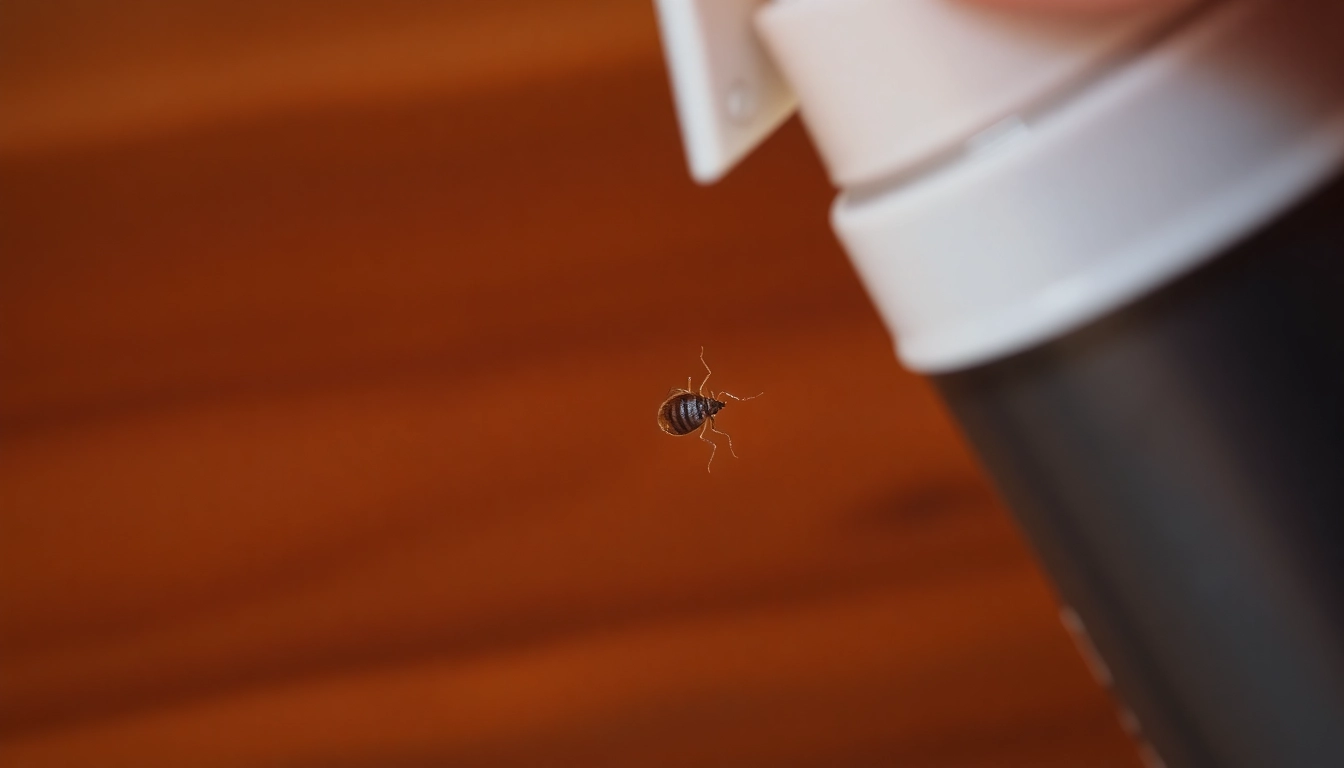Understanding Bed Bugs: An Overview
Bed bugs, once a scourge of the past, have made a significant comeback in recent years, becoming a common problem in homes, hotels, and other places where people gather. As small, elusive pests, they can cause considerable distress due to their nocturnal feeding habits. Understanding these pests and implementing effective bed bug control techniques is essential for any homeowner facing this dilemma.
What are Bed Bugs?
Belonging to the family Cimicidae, bed bugs (Cimex lectularius) are small, wingless insects that feed on the blood of humans and animals. Adults are approximately the size of an apple seed, around 5-7 mm long, and have a flattened, oval shape. Their coloration ranges from a light tan to a deep brown, depending on their feeding state. Bed bugs are notorious for their ability to travel easily, spreading from one area to another in luggage, clothing, or used furniture.
Signs of Bed Bug Infestation
Identifying a bed bug infestation is crucial for early intervention. Here are the common signs:
- Bit marks: Small red, itchy bumps on the skin that appear in clusters or lines.
- Blood stains: Tiny, reddish-brown spots on linens, mattresses, or furniture.
- Fecal spots: Dark, pepper-like spots which are bed bug droppings.
- Eggs and shells: Tiny, white eggs and light-colored molted skins around sleeping areas.
The Impact of Bed Bugs on Health
While bed bugs are not known to transmit diseases, their bites can lead to secondary infections due to scratching and allergic reactions. Psychological impacts such as anxiety and insomnia can also arise from the stress of an infestation. Understanding these health implications underscores the importance of addressing bed bug problems effectively and promptly.
Effective Bed Bug Control Techniques
Heat Treatments for Bed Bugs
Heat treatment has emerged as one of the most effective methods for eliminating bed bugs. Raising the temperature to at least 115°F (46°C) can kill bed bugs at all life stages. Professionals typically use specialized equipment that circulates hot air throughout the affected areas, ensuring that every corner is reached. Homeowners can also employ portable heaters, but caution is advised to avoid damage and ensure thoroughness.
Chemical Treatments: What You Need to Know
Chemical treatments remain a staple in pest control, but they require careful handling. Various pesticides are available, each with different active ingredients that target specific life cycles of bed bugs. It’s imperative to follow the manufacturer’s instructions and EPA guidelines. Integrated Pest Management (IPM) approaches often combine these chemical methods with non-chemical measures for greater effectiveness.
Preventive Measures to Stop Bed Bugs
Prevention is always the best strategy when dealing with bed bugs. Here are some key preventive measures:
- Regular inspections of sleeping areas, especially after travel.
- Using bed bug-proof mattress and box spring encasements.
- Keeping clothing and luggage off the floor in hotels or shared accommodations.
- Minimizing clutter in living areas to reduce hiding spots.
Do-It-Yourself Bed Bug Control Methods
Step-by-Step Guide to DIY Control
For those looking to tackle bed bugs themselves, here’s a comprehensive DIY approach:
- Identification: Confirm the presence of bed bugs before taking action.
- Declutter: Remove unnecessary items from infested rooms.
- Vacuum: Vacuum surfaces thoroughly and immediately dispose of vacuum bags outside.
- Wash and dry: Wash bed linens, clothes, and any infested fabric in hot water, then dry on high heat.
- Apply treatments: Utilize insecticides or diatomaceous earth in accordance with labeling instructions.
Common Mistakes to Avoid
When attempting DIY bed bug control, avoid these common pitfalls:
- Neglecting to thoroughly inspect and clean all affected areas.
- Skipping integrated methods that combine heat, chemical, and non-chemical treatments.
- Assuming all products are safe and effective without assessing their EPA approvals.
When to Call Professionals
If a bed bug infestation persists despite your efforts, it’s time to seek professional assistance. Signs that indicate you should consult a pest control company include:
- A significant population of bed bugs overwhelming your DIY methods.
- Severe allergic reactions requiring medical attention.
- Inability to pinpoint the origins of the infestation.
Choosing the Right Pest Control Service
What to Look for in a Pest Control Company
Selecting a competent pest control service is paramount for effective bed bug eradication. Consider the following factors:
- Licensing and Certifications: Ensure the company is licensed and certified in pest management.
- Experience: Look for a company with a proven track record in bed bug control.
- Integrated Pest Management (IPM): Choosing companies that follow IPM practices can lead to more sustainable solutions.
Cost and Value of Professional Bed Bug Control
While the costs of professional treatments can vary widely based on the severity of the infestation and the methods employed, weighing the costs against the potential health impacts and peace of mind is crucial. Professional services often include follow-up assessments and guarantees that DIY solutions may not offer.
Questions to Ask Your Exterminator
Before hiring a pest control service, consider asking these essential questions:
- What methods do you use for bed bug control?
- Can you provide references from past clients?
- Are your technicians trained and licensed in managing bed bugs?
Bed Bug Myths and Misconceptions
Debunking Common Myths
Bed bugs are often surrounded by myths that can hinder effective control. Here are the truths behind some common misconceptions:
- Myth: Bed bugs only live in dirty environments.
Truth: Bed bugs can thrive in both clean and cluttered spaces. - Myth: You can get rid of bed bugs with just a vacuum.
Truth: While vacuuming helps, it is not sufficient on its own for complete eradication. - Myth: Bed bugs only come from hotels.
Truth: They can hitchhike from any location, including public transportation and friend’s homes.
Understanding Pesticide Myths
Misunderstanding pesticide use can lead to ineffective treatments. Here are some important points to consider:
- Pesticides are not a standalone solution; they need to be part of a broader bed bug management strategy.
- Effective pesticides are regulated by governmental agencies and should be used according to labeled instructions.
- Assuming all pesticides work the same poses risks as bed bugs can develop resistance to certain chemicals.
The Truth About Home Remedies
While some home remedies may offer minor relief, the reality is that most are not proven to be effective for complete eradication. Common home remedies include:
- Essential oils such as tea tree or lavender oils may repel bed bugs but are not highly effective at eliminating infestations.
- Rubbing alcohol can kill bed bugs on contact but does not ensure the elimination of all stages.
Relying solely on home remedies can prolong infestations, emphasizing the importance of professional help or comprehensive DIY efforts.
Conclusion
The resurgence of bed bugs has necessitated a growing understanding and proactive approach to pest control. From identifying infestations to employing effective control techniques and debunking common myths, knowing how to combat these pests is crucial. Whether opting for DIY methods or professional services, thorough cleaning, vigilance, and informed decision-making are key to maintaining a bed bug-free home.



